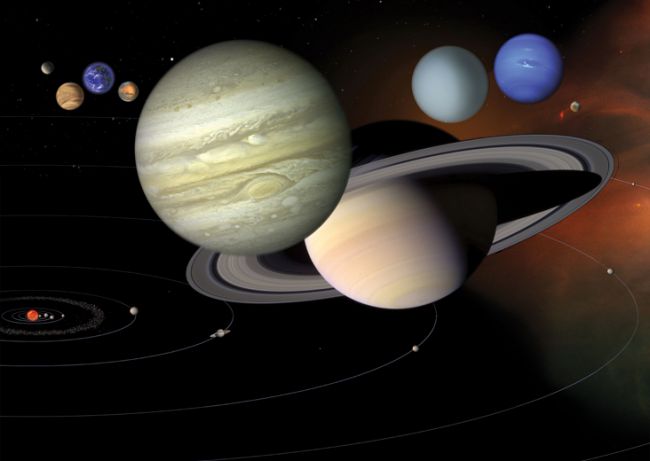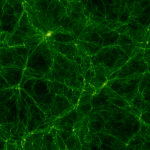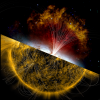 The research interests of the Group of Planetary Systems focus on the origin and dynamic evolution of
planets and small bodies around the Sun and other stars. Since the discovery of the first extrasolar planet
in 1995 by Michel Mayor and Didier Queloz, we have witnessed a true revolution in planetary astronomy
with several thousand of new systems detected so far. While some of their features are similar to our
Solar system, others show marked differences, including planetary bodies in cometary and/or retrograde
orbits, hot Jupiters and planets in multiple star systems. This enormous and growing diversity points
towards planetary formation processes which may be much more complex than imagined a few years ago.
The research interests of the Group of Planetary Systems focus on the origin and dynamic evolution of
planets and small bodies around the Sun and other stars. Since the discovery of the first extrasolar planet
in 1995 by Michel Mayor and Didier Queloz, we have witnessed a true revolution in planetary astronomy
with several thousand of new systems detected so far. While some of their features are similar to our
Solar system, others show marked differences, including planetary bodies in cometary and/or retrograde
orbits, hot Jupiters and planets in multiple star systems. This enormous and growing diversity points
towards planetary formation processes which may be much more complex than imagined a few years ago.
Our work is developed in unison with staff from the Astronomical Observatory of the UNC. Current research topics include:
- Formation and orbital evolution of planets in binary star systems.
- Models of tidal interaction and its application to planets and satellites.
- Secular and resonant evolution of multiple planetary systems.
- Resonant dynamics of satellites around gas giants.
- Study of coorbital configurations around planets or stars.
- Study of coorbital configurations around planets or stars.
In collaboration with colleagues from FaMAF, FCEFyN and researchers from other universities, we have recently undertaken studies on the dynamics of artificial satellites in LEO and MEO regions, searching for optimal de-orbiting mechanisms with minimum fuel consumption. We aim to develop dynamical algorithms that may help design future space missions complying with environmental and sustainability constraints.








